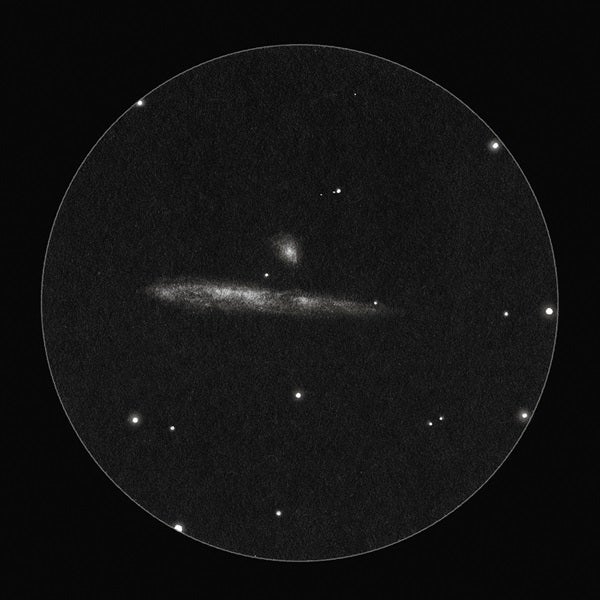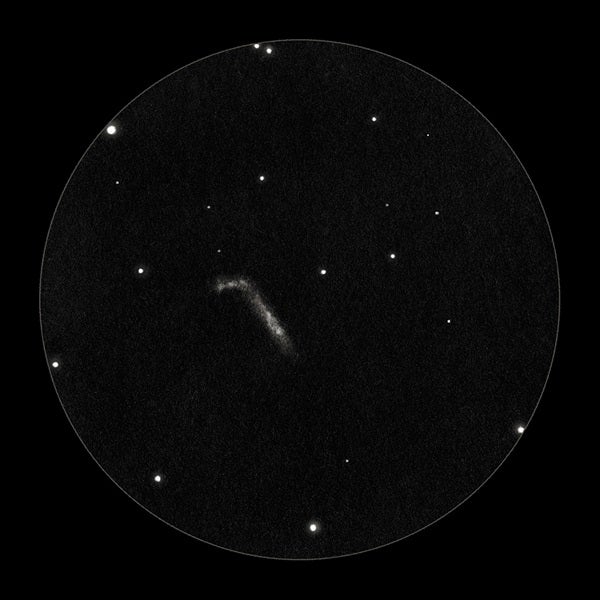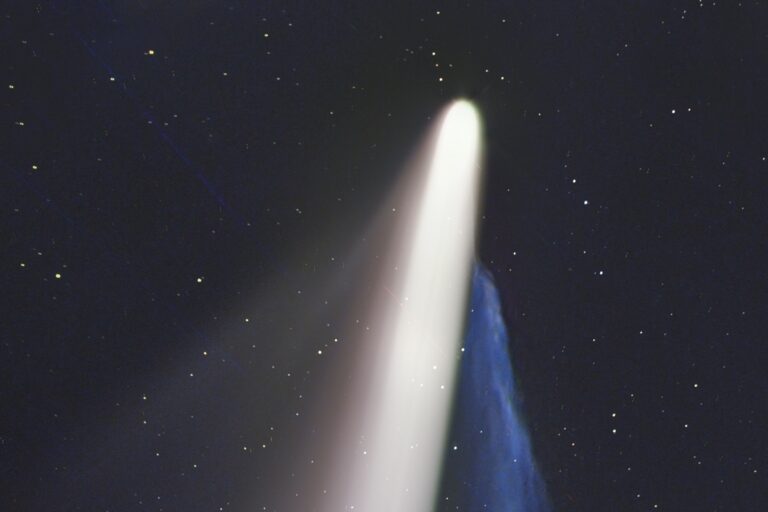Two relatively large edge-on galaxies, the Whale (NGC 4631) and the Hockey Stick (NGC 4656–7), lie 25 million light-years away toward the constellation Canes Venatici the Hunting Dogs. Because of the mass and energy of these objects, a weak gravitational interaction occurs between the two, and it affects their neighboring dwarf galaxies as well. This force pulls material from one galaxy to the other, distorting their shapes and triggering star formation.
You’ll find the pair nearly halfway down and a tad southeast of an imaginary line between Cor Caroli (Alpha [α] Canum Venaticorum) and Gamma (γ) Comae Berenices. You’ll likely spot NGC 4631 first. Shining at 10th magnitude, it’s one of the brightest edge-on galaxies in the sky. It spans 17′ by 3.5′ and has a small elliptical galaxy, NGC 4627, hovering 2.5′ to its northwest. Together, they form Arp 281 from Halton Arp’s Atlas of Peculiar Galaxies. Pegged as the Whale for its unusual wedge shape, it doesn’t take much to imagine NGC 4631 as Earth’s largest mammal drifting through the eyepiece, with the small elliptical galaxy as its spray.
Through an 8-inch telescope, NGC 4631 is bright and elongated east to west with tapered ends. Its mottled appearance will become more defined and knotted along its major axis if you view it through a 12-inch scope. You should spot a 12th-magnitude star nestled between the Whale and its companion. A 16-inch instrument sharpens the northern edge, and the whale’s head to the east brightens and bulges before narrowing along the tail. There, a 13th-magnitude star balances above its tip.
Once you’ve had your fill of the Whale, look 0.5° southeast to find NGC 4656–7, which glows at magnitude 10.4 and covers an area 14′ by 3′ in size. Observers call it the Hockey Stick because its two visible parts resemble a shaft and blade.
The Hockey Stick appears as a faint, hooked sliver through an 8-inch telescope, running northeast to southwest. A 10th-magnitude star glows 11′ northeast of the galaxy. Use a 12-inch scope, and you’ll see a bright knot within the blade at the northeast tip of the galaxy. It’s this knot that carries the separate designation NGC 4657. The shaft broadens and diffuses to the southwest. A 16-inch scope reveals a three-knotted blade with two more nestled within the mottled nebulosity of the shaft.
Because I used a mount that didn’t track, I began each sketching session by framing the field of view so that a few of the brighter stars were near its edge. Those key stars, along with marking the directions as they drifted through the field, became reference points that let me easily re-center the eyepiece view after I made additions to the sketch.
Next, I completed the majority of the star field using a set of graphite pencils to render their varying magnitudes. As I worked, I made small adjustments to their sizes so that each was recognizable when I compared my drawing to the eyepiece view. I then added the galaxies with the tip of a blending stump that I coated with graphite. And finally, I dotted in the faintest stars to complete the sketch.
If you have questions or comments, please contact me at erikarix1@gmail.com.












